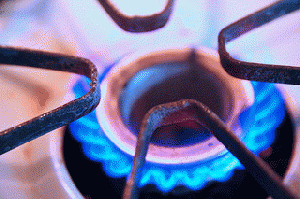During these harsh winters, people of Pakistan are facing the challenge of intolerable and unscheduled gas-load shedding. From domestic chores of cooking, washing and bathing to industrial and commercial sector, the entire national activities have been badly jeopardized. Gas-load shedding has disrupted daily routines of common man and brought business and human productivity to a standstill. All over the country demonstrations are being staged against gas-load shedding and the Sui Northern Gas Pipelines Limited (SNGPL). The tyres are being burnt and roads are being blocked by the public demanding restoration of gas supply with adequate pressure to their localities. The miserable public demands priority given to domestic consumers over the industrial sector.
SNGPL has 4.7 million domestic, commercial, CNG, and industrial consumers who are fed through a common distribution network. On an average, each year gas demand rises by 40 to 50 million meter cubic feet per day (mmcfd) during summers and 80 to 100 mmcfd during winters. But unfortunately, there is no considerable increase in input by small fields due to depletion of major gas fields supplying gas to SNGPL system. Excluding domestic and commercial sectors, this shortfall is bridged through curtailment in gas supply to other sectors including power, industry, CNG and agriculture leading to unscheduled gas-load shedding. At present, the Sui Northern Gas Pipelines Limited (SNGPL) is facing an overall shortfall of 1,400 mmcfd. The SNGPL unaccounted-for-gas (UFG) losses stood at around 10% with 3-4 % of theft while rests 6-7 % are the distribution losses. SNGPL, with one of the longest pipeline networks, has no concrete plans to bring down UFG losses or to evolve new exploration activities. It has been facing serious administrative and systemic challenges. According to the Oil and Gas Regulatory Authority (Ogra), the supply-demand gap stands at around 2 billion cubic feet per day (bcfd) at present and would reach around 8.5 bcfd in 2028-29.
At provincial level, Sindh has an opinion that the gas outages are created to set unrest in the province and to make people rise against the provincial administration. According to PPP Senator Saeed Ghani, Sindh produces 70% of the natural gas while the provincial consumption stands at 45%. Therefore, the gas shortage is a serious matter that needs immediate federal intervention. The K-P government under the article 158 has demanded an additional gas supply of 100 mmcfd from Ministry of Petroleum and Natural Resources for setting up its combined cycle gas turbine for power-generation projects. The ministry's Economic Coordination Committee (ECC) has approved the allocation of 100 mmcfd gas supply to K-P on condition that it would receive gas supply 50 mmcfd from January 2016 in first phase and other 50 mmcfd from January 2018 in second phase. The provincial government would undertake all the risks and costs associated with the projects. These power plants would help resolve future energy needs of the K-P province. In Punjab, according to official figures, SNGPL is facing a shortfall of 700 mmcfd almost 27% of the total requirement while unofficial sources have reported the shortage at 40%. The exports of the textile industry have dropped down to 4% and textile production to 25% in the province. Hundreds of workers in more than 2,000 small-sized surgical hammering and forging units in Sialkot and surrounding sectors have been rendered jobless due to unprecedented gas-load shedding in the areas of Punjab.
To resolve this oil shortage, the government has imposed Gas Infrastructure Development Cess (GIDC) on new connections for industrial use since 2011 through an ordinance. The government has invited an Expressions of Interest for the construction of two phased 1100-km South-North gas pipeline that will reduce the cost of gas transmission. New Liquified Natural Gas (LNG) fueled power plants would also be installed to reduce gas shortage. The government has planned to import LNG at $18 per million British thermal units, more than four times the current wellhead gas price of $4 per mmbtu. At Badin, around 140 Mcf of gas reserves have been discovered and steps are being taken for its proper utilization. The completion of Pak-Iran gas pipeline project would also help fulfill the gas shortage. The SNGPL has also cut off gas supply to the unpaid consumers who have added exponentially to the circular debt. The National Assembly Standing Committee on Cabinet Secretariat has also directed SNGPL to provide gas to domestic consumers three times a day in winters. Gas supply had also been cut off for almost 5-6 days a week at the CNG stations to restore smooth supply of domestic consumers, but more practical and long term measures are needed at the hour.
In order to rectify the situation, more indigenous energy resources should be explored. Proper production, management, distribution, allocation and consumption strategies should be planned. A constitutional amendment is required for proper action plan over existing energy resources and their utilization. All federating units should understand and co-operate with each other on their provincial energy needs and their overall contribution to the national GDP. More exploration and investments are needed in gas sector. The usage of CNG as an alternate fuel to petrol, owing to disparity in oil and gas prices should be reduced. The operative IPPs should be paid properly and on time. Taxes and gas bills should be paid to avoid accumulation of circular debt. Private and foreign investors in gas and oil fields should be encouraged. At domestic level, wastage and consumption of gas should be avoided. A comprehensive national energy policy which includes regularization of illegal connections, fresh allocations for the transport and housing sectors, ban on gas-run electricity generators and illegal commercial consumers are the immediate policy changes required and must be implemented by the government to overcome this gas-shortage crisis in Pakistan.






